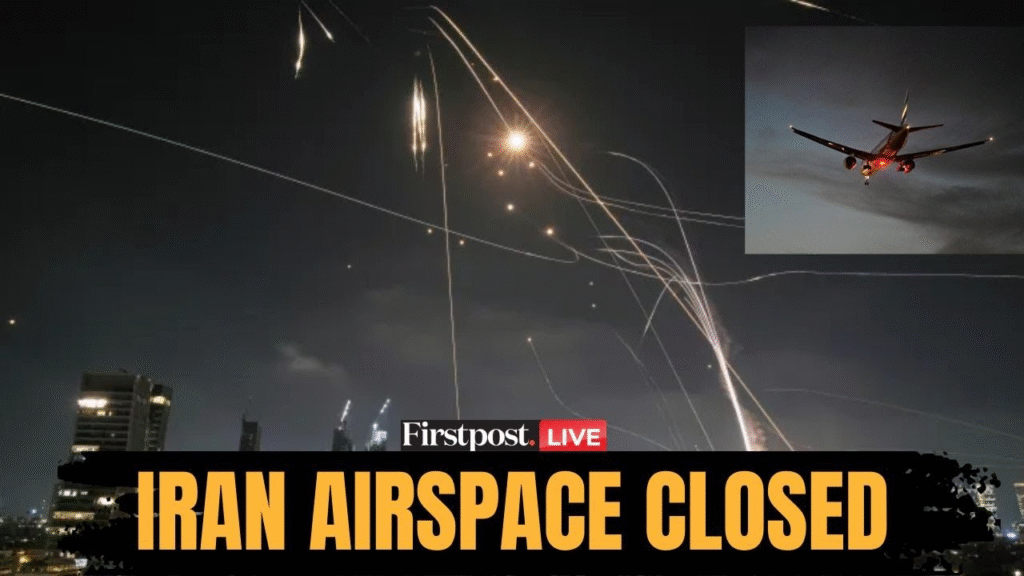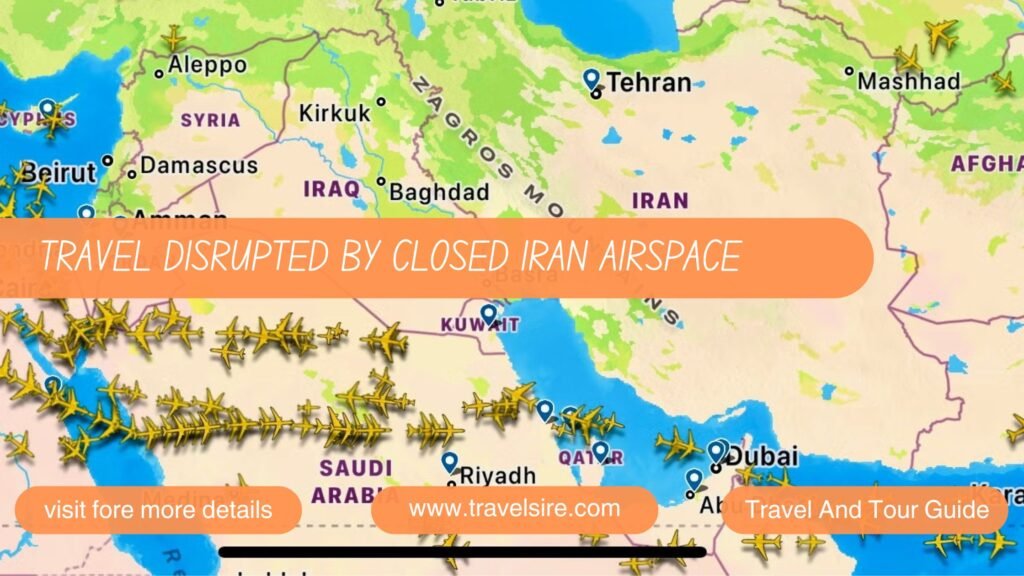Introduction
Have you noticed more flight delays or cancellations when flying between the U.S. and Europe or Asia lately? It’s not your imagination—closed Iran airspace causing flight delays has become a hot issue. In fact, over 1,800 flights across Europe were disrupted on June 13 alone, with around 650 cancellations, and major U.S. carriers like United and Delta were affected amid the recent Iran–Israel conflict. Keep reading to uncover why this Middle East airspace closure matters, how airlines are adapting, and what you can do as a traveler.
See More Guide
🚨 What’s Going On
H2: Closed Iran Airspace Causing Flight Delays – The Bigger Picture
- Middle East airspace shutdown: In response to military strikes on Iran, countries such as Iran, Iraq, Jordan, and Syria abruptly closed or heavily restricted their skies.
- European impact: Eurocontrol reported nearly 1,800 flight disruptions—and 650 cancellations—on a single day.
- Airline responses: U.S. carriers like United (returning UAL84 mid‑flight) and Delta halted services; Air India canceled or rerouted flights across North America and Europe.
Transitioning into detailed airline adjustments helps us understand the impact.
Detailed Review: Airline Reactions to the Closed Iran Airspace
Here’s a roundup of how top airlines are handling the closed Iran airspace, causing flight delays.
H3: United Airlines & Delta
- United Airlines: Returned UAL84 mid‑air; canceled UAL90; suspended flights to Tel Aviv; monitoring through the end of June.
- Delta Air Lines: Prompt suspension of Israel-bound flights; advising potential mid-June to late-June disruptions.
Pros: Safety prioritized, reroutes minimize risk.
Cons: Widespread cancellations, limited notice.
H3: Air India
- Actions: Diverted 16 flights, canceled 83 due to combined crash and airspace closure; accommodating passengers with refunds and rebooking.
- Added delays: Detours via Vienna, Frankfurt, and Athens extended flight time and cost.
Pros: Flexible passenger options, safety-first approach.
Cons: Major schedule disruption, cost increases.
H3: Emirates, Qatar Airways & Regional Carriers
- Emirates: Cancelled flights to Iraq and Iran until late June; 128 delays at Dubai.
- Dubai traffic: Over 500 flight delays/cancellations across the region, including Emirates delays & FlyDubai disruptions at DXB and SHJ
- Qatar Airways: Suspended routes to Iran, Iraq, Syria until further notice
Pros: Comprehensive rerouting, coordination across hubs.
Cons: Congestion at alternate air corridors, cascading delays.
H3: European Carriers
- Lufthansa, British Airways, Air France‑KLM: Suspended flights to Tehran and Tel Aviv through June/July euronews.com.
- Budget airlines (Wizz Air, Ryanair, Aegean): Canceled or suspended services extensively to avoid high-risk zones.
Pros: Regulatory compliance, crew safety.
Cons: Massive schedule disruption, overbookings on alternate routes.
H3: Additional Impacts
- Diversions to Cyprus & Azerbaijan: At least 29 flights with ~2,400 passengers rerouted to Cyprus; 10+ flights landed in Baku.
- Regional airport strain: Ben Gurion shut completely; Larnaca and Paphos acting as overflow hubs.
- Middle East delays: Over 700 cancellations/delays reported at Ben Gurion, Dubai, Sharjah, and Amman.
Buyer’s Guide for Travelers: Navigating Flight Disruption
While you’re not buying a product, let’s structure a buyer’s guide for airline or routing decisions:
- Schedule flexibility – opt for flights with flexible change/cancellation policies when possible.
- Travel insurance – ensure it covers geopolitical disruptions and reroutes.
- Airline transparency – the biggest carriers (United, Emirates, Lufthansa) offer better updates/tools.
- Alternate hubs – consider flights via Turkey, Egypt, or Central Asia to bypass closed skies.
- Buffer time – build in 2–4 extra hours for potential reroutes and holding patterns.
- Stay informed – use FlightAware, Flightradar24, and official airline advisories.
FAQs
1. How long will the closed Iran airspace causing flight delays last?
The closures began June 13, 2025, and remain “until further notice.” Airspace reopening will depend on the de-escalation of Iran–Israel tensions.
2. Can U.S. flights still go from the U.S. to Europe via alternative routes?
Yes, flights now detour north via Turkey/Azerbaijan or south via Egypt/Saudi Arabia, adding hours and congestion.
3. Will rerouting increase airfare significantly?
Likely, airlines face higher fuel costs and extended crew time, which may trickle into ticket prices.
4. Are there safety concerns flying over adjacent regions?
At-risk corridors near conflict zones are avoided. Flights now use safer but busier airspace, increasing delay risk but maintaining safety.
5. What should I do if my flight is canceled due to airspace closure?
Contact your airline for rebooking, refunds, or travel vouchers. Use travel insurance and check alternate routing options.

Closed Iran airspace causing flight delays may be an overused phrase, but it captures a major travel disruption affecting thousands. From U.S. carriers to Gulf hubs, airlines are rerouting, cancelling, and adjusting nodes to prioritize safety. If you’re planning a summer trip through those skies, stay flexible, choose the right airline, and prepare for extended travel time. Safe travels—and may your flights be delay-free!

